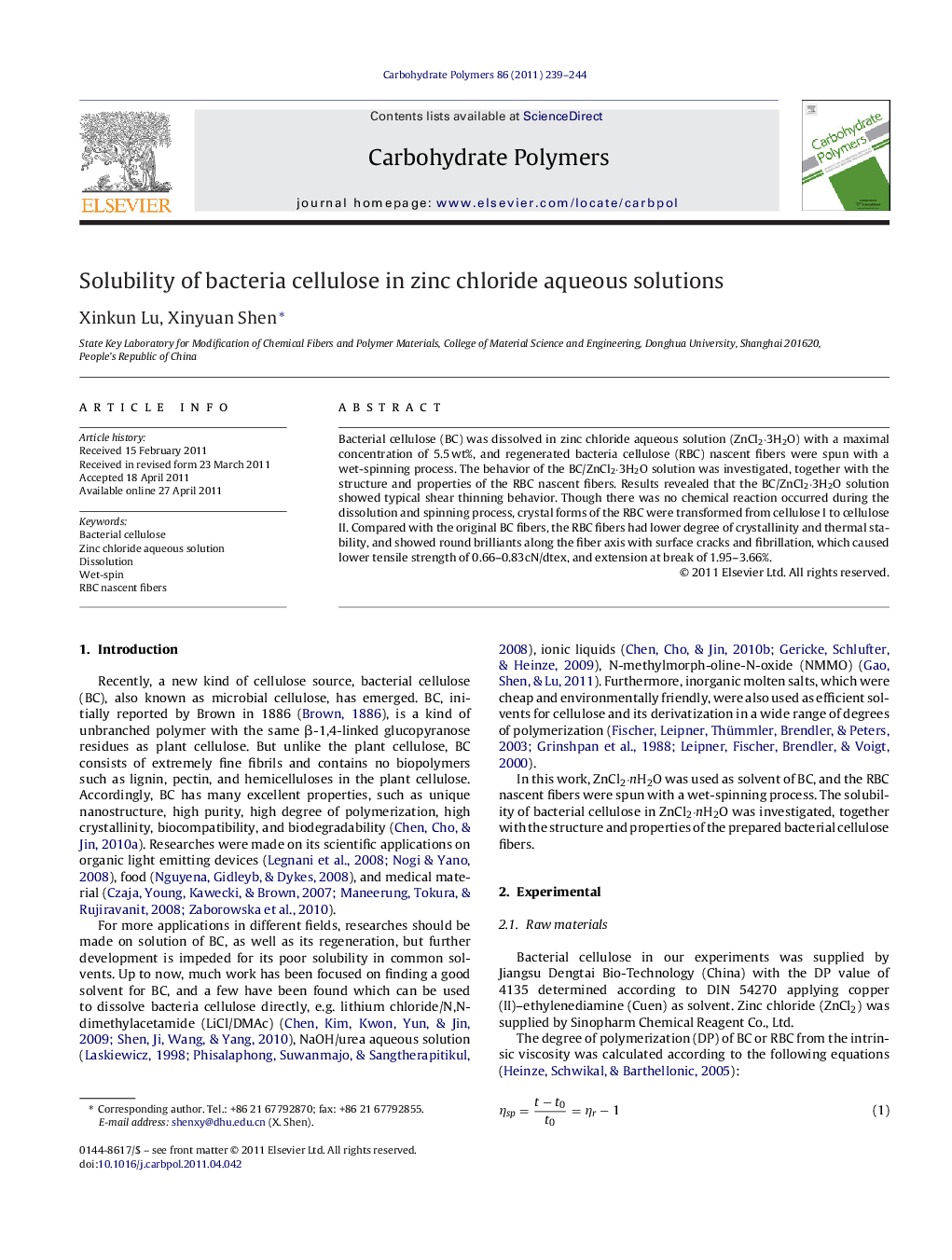| Article ID | Journal | Published Year | Pages | File Type |
|---|---|---|---|---|
| 10602130 | Carbohydrate Polymers | 2011 | 6 Pages |
Abstract
Bacterial cellulose (BC) was dissolved in zinc chloride aqueous solution (ZnCl2·3H2O) with a maximal concentration of 5.5 wt%, and regenerated bacteria cellulose (RBC) nascent fibers were spun with a wet-spinning process. The behavior of the BC/ZnCl2·3H2O solution was investigated, together with the structure and properties of the RBC nascent fibers. Results revealed that the BC/ZnCl2·3H2O solution showed typical shear thinning behavior. Though there was no chemical reaction occurred during the dissolution and spinning process, crystal forms of the RBC were transformed from cellulose I to cellulose II. Compared with the original BC fibers, the RBC fibers had lower degree of crystallinity and thermal stability, and showed round brilliants along the fiber axis with surface cracks and fibrillation, which caused lower tensile strength of 0.66-0.83cN/dtex, and extension at break of 1.95-3.66%.
Keywords
Related Topics
Physical Sciences and Engineering
Chemistry
Organic Chemistry
Authors
Xinkun Lu, Xinyuan Shen,
